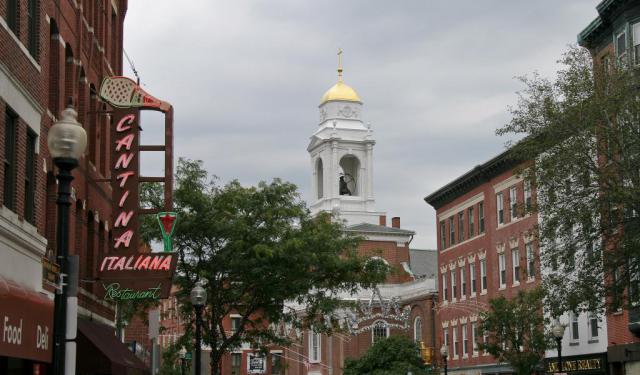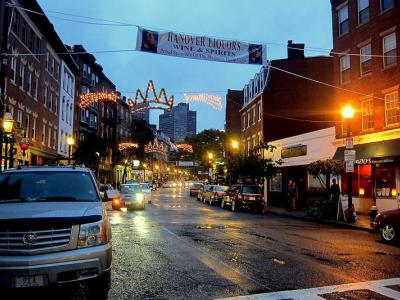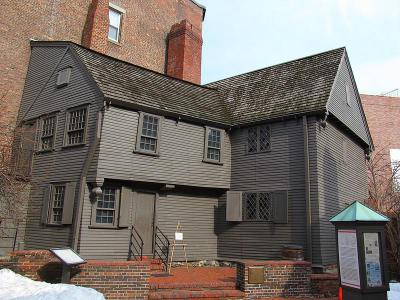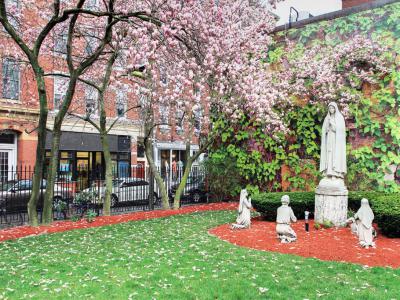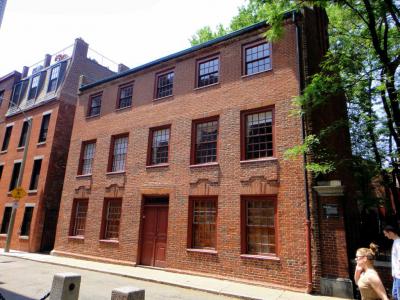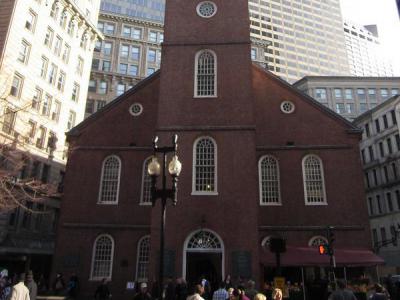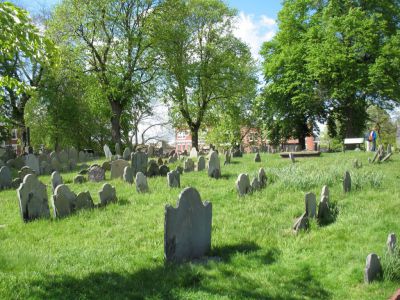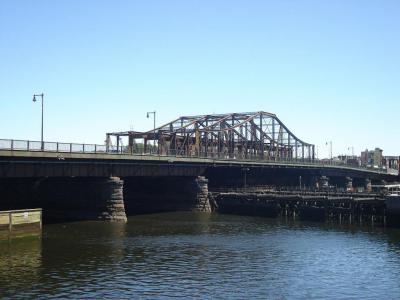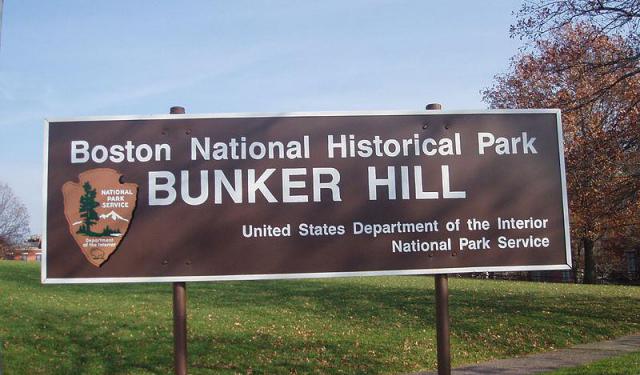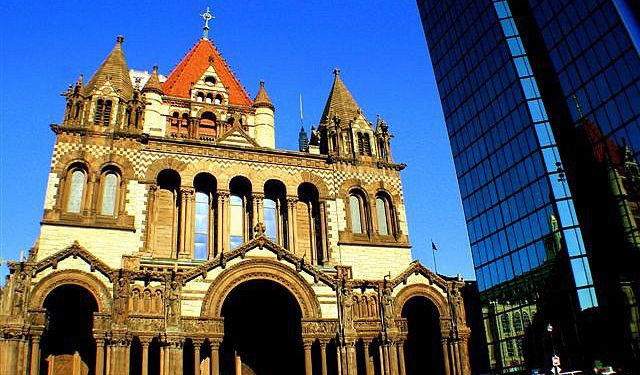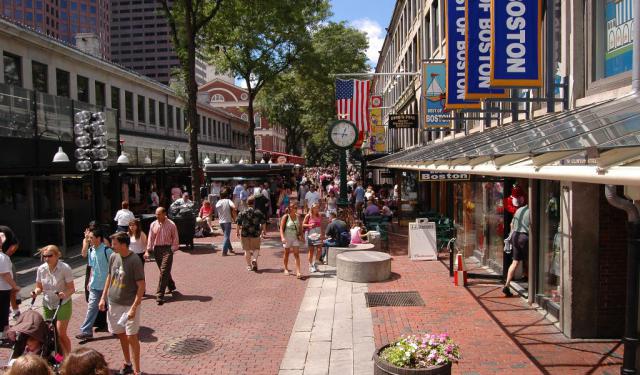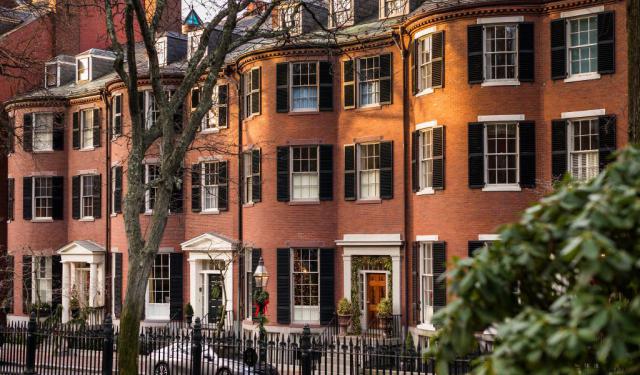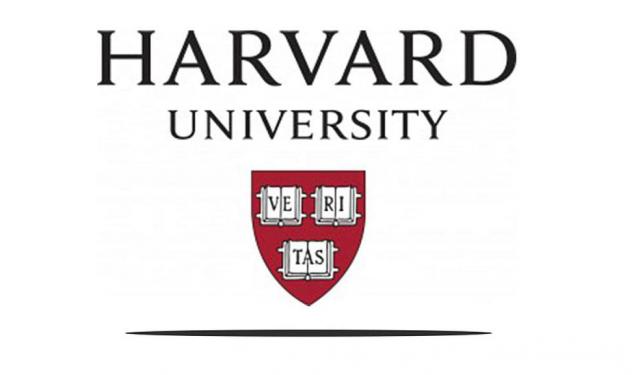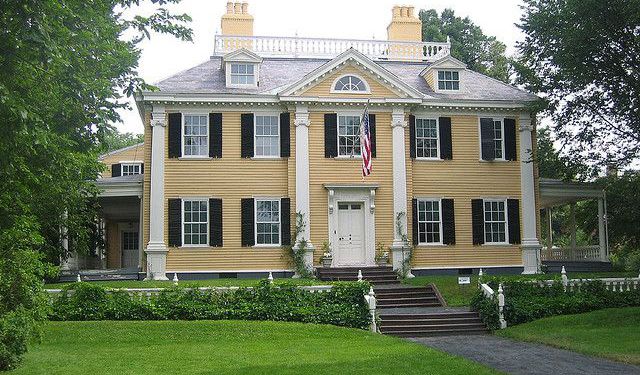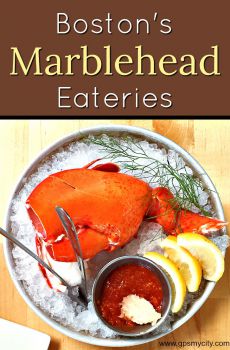North End Walking Tour (Self Guided), Boston
The North End was the city's first neighborhood, and one that has been key to its fortunes, having become a hub of commercial, social and intellectual activity by the 1750s. Later known as Boston's Little Italy, it has been home to Italian immigrants through much of the 20th century, and still retains a certain Mediterranean flavor in its many restaurants, cafés, and specialty shops. In addition to being a foodie paradise, the North End is also home to some of most important historical landmarks in the city.
Make sure to stop by Paul Revere’s historic home – the oldest still standing building in Boston, where you may learn more about its famous owner than you ever knew. It certainly is interesting to see how people lived back in the 1700s, while also learning about the Revolutionary War and birth of the Nation.
Other places of interest are represented by the city’s oldest active church (Old North Church) and the nearby Copp's Hill Burying Ground with its remarkably beautiful headstones – very Victorian Gothic in style. You can even see the tomb of Cotton Mather, the Puritan minister that was a central figure of the Salem witch trials.
The route ends at the Charleston Bridge which, besides being a sight to behold, allows a terrific view of The Leonard P. Zakim Bunker Hill Memorial Bridge at the same time.
The North End neighborhood is one of those where it's easy to get lost, so take our self-guided walking tour to appreciate its main historical landmarks and thoroughfares – a nice way to “lose yourself” while staying on the right course.
Make sure to stop by Paul Revere’s historic home – the oldest still standing building in Boston, where you may learn more about its famous owner than you ever knew. It certainly is interesting to see how people lived back in the 1700s, while also learning about the Revolutionary War and birth of the Nation.
Other places of interest are represented by the city’s oldest active church (Old North Church) and the nearby Copp's Hill Burying Ground with its remarkably beautiful headstones – very Victorian Gothic in style. You can even see the tomb of Cotton Mather, the Puritan minister that was a central figure of the Salem witch trials.
The route ends at the Charleston Bridge which, besides being a sight to behold, allows a terrific view of The Leonard P. Zakim Bunker Hill Memorial Bridge at the same time.
The North End neighborhood is one of those where it's easy to get lost, so take our self-guided walking tour to appreciate its main historical landmarks and thoroughfares – a nice way to “lose yourself” while staying on the right course.
How it works: Download the app "GPSmyCity: Walks in 1K+ Cities" from Apple App Store or Google Play Store to your mobile phone or tablet. The app turns your mobile device into a personal tour guide and its built-in GPS navigation functions guide you from one tour stop to next. The app works offline, so no data plan is needed when traveling abroad.
North End Walking Tour Map
Guide Name: North End Walking Tour
Guide Location: USA » Boston (See other walking tours in Boston)
Guide Type: Self-guided Walking Tour (Sightseeing)
# of Attractions: 7
Tour Duration: 1 Hour(s)
Travel Distance: 1.0 Km or 0.6 Miles
Author: anna
Sight(s) Featured in This Guide:
Guide Location: USA » Boston (See other walking tours in Boston)
Guide Type: Self-guided Walking Tour (Sightseeing)
# of Attractions: 7
Tour Duration: 1 Hour(s)
Travel Distance: 1.0 Km or 0.6 Miles
Author: anna
Sight(s) Featured in This Guide:
- Hanover Street
- Paul Revere House
- St. Leonard's Church and Peace Garden
- Clough House at Old North
- Old North Church
- Copp's Hill Burying Ground
- Charlestown Bridge
1) Hanover Street
Hanover Street, alongside Salem Street, forms the vibrant Italian core of Boston's North End. While you may still hear traces of Italian spoken by the older generation, many of the Italian-American families that once resided here in the early 20th century have since relocated to the suburbs. Nevertheless, their legacy endures in the form of cafes, restaurants, bakeries, bars, and even a private cigar-smoking club that continue to thrive.
Hanover Street’s narrowness makes it best explored on foot, ideally at a leisurely pace with ample opportunities to savor the ambiance. In the evening, it comes alive with both locals and visitors seeking delicious meals. Saint Stephen's Catholic Church, often regarded as the home parish of Rose Fitzgerald Kennedy, the matriarch of the Kennedy political dynasty, is highly esteemed in the area.
On the corner of Hanover and Prince streets, you'll find Saint Leonard's Church, which serves as the spiritual nucleus of the North End. Built by Italian immigrants, its ornate interior stands as a testament to the exceptional craftsmanship of the Italian artists who were among its early parishioners. During the weekends of late July and August, the North End streets come alive with food festivals and parades hosted by old-country religious societies.
Tip:
The section of Hanover Street between the Rose Kennedy Greenway and Union Street is closed on Fridays and Saturdays to accommodate the Haymarket, Boston's centuries-old outdoor market.
Hanover Street’s narrowness makes it best explored on foot, ideally at a leisurely pace with ample opportunities to savor the ambiance. In the evening, it comes alive with both locals and visitors seeking delicious meals. Saint Stephen's Catholic Church, often regarded as the home parish of Rose Fitzgerald Kennedy, the matriarch of the Kennedy political dynasty, is highly esteemed in the area.
On the corner of Hanover and Prince streets, you'll find Saint Leonard's Church, which serves as the spiritual nucleus of the North End. Built by Italian immigrants, its ornate interior stands as a testament to the exceptional craftsmanship of the Italian artists who were among its early parishioners. During the weekends of late July and August, the North End streets come alive with food festivals and parades hosted by old-country religious societies.
Tip:
The section of Hanover Street between the Rose Kennedy Greenway and Union Street is closed on Fridays and Saturdays to accommodate the Haymarket, Boston's centuries-old outdoor market.
2) Paul Revere House (must see)
A small triangular enclave adorned with cobblestones and gaslights, North Square stands out as one of Boston's most historically significant and aesthetically appealing corners. Here, eateries take a back seat to the Paul Revere House, which holds the distinction of being downtown Boston's oldest residential address, located at 19 North Square. Paul Revere, a lifelong North Ender, called this place home from 1770 to 1800, with the exception of much of 1775 when he was in hiding from the British in Watertown.
Originally built around 1680, the small Tudor-style structure, constructed with post-and-beam framing, underwent various uses over the years, including stints as a grocery store, tenement, and cigar factory. In 1908, it was painstakingly restored to its 17th-century appearance (remarkably, 90% of the framework is original). The house stands on the site where the grander residence of Puritan leader Increase Mather (father of Cotton Mather) once stood before it was destroyed in the Great Fire of 1676.
While the building's significance lies more in its historical longevity than its architectural grandeur, its third-floor Elizabethan-style overhang and leaded windowpanes provide a nice contrast to the surrounding red-brick buildings. Upstairs, you can explore examples of Revere's handcrafted silverware, worth a look for their craftsmanship and historical value. The museum also hosts a series of compact yet thought-provoking rotating exhibitions, shedding light on subjects such as the mythologizing of Revere's famous horseback ride.
Throughout the year, special events are organized, many of which are family-friendly. These events often feature period-costumed characters engaging in role-play, serving colonial-era treats like apple-cider cake, showcasing a silversmith practicing his craft, entertaining crowds with dulcimer music, or staging military reenactments in authentic period attire.
Originally built around 1680, the small Tudor-style structure, constructed with post-and-beam framing, underwent various uses over the years, including stints as a grocery store, tenement, and cigar factory. In 1908, it was painstakingly restored to its 17th-century appearance (remarkably, 90% of the framework is original). The house stands on the site where the grander residence of Puritan leader Increase Mather (father of Cotton Mather) once stood before it was destroyed in the Great Fire of 1676.
While the building's significance lies more in its historical longevity than its architectural grandeur, its third-floor Elizabethan-style overhang and leaded windowpanes provide a nice contrast to the surrounding red-brick buildings. Upstairs, you can explore examples of Revere's handcrafted silverware, worth a look for their craftsmanship and historical value. The museum also hosts a series of compact yet thought-provoking rotating exhibitions, shedding light on subjects such as the mythologizing of Revere's famous horseback ride.
Throughout the year, special events are organized, many of which are family-friendly. These events often feature period-costumed characters engaging in role-play, serving colonial-era treats like apple-cider cake, showcasing a silversmith practicing his craft, entertaining crowds with dulcimer music, or staging military reenactments in authentic period attire.
3) St. Leonard's Church and Peace Garden
Nestled at the juncture of Hanover Street and parallel to Prince Street, Saint Leonard's Church has been Boston's go-to spot for heavenly Italian-Catholic vibes since its inception in 1873. Run by Franciscan friars and known for housing Saint Anthony's shrine, it's the first Italian-Catholic church in all of New England, founded well before pasta became a food group of its own.
As you approach, the Peace Garden flaunts its charm, luring you in with the promise of serenity and a potential divine intervention for your love life or, at the very least, your garden's bloom. Once you've taken in the horticultural delights, venture into the upper church, where the interior décor takes a sharp left turn from Boston's traditionally stark Protestant places of worship. Prepare to be dazzled by the vibrant lineup of saints, an exquisite rendition of the Stations of the Cross, and enough frescoes and stained glass to make your Instagram followers green with envy. Even if you're not big on faith, Saint Leonard's visual spectacle is worth every second of your time.
And here's the best part – they won't charge you a entrance fee, but the gift shop will be more than happy to help you part with a few earthly dollars in exchange for heavenly souvenirs. Consider it your holy obligation to browse the offerings and maybe pick up something.
As you approach, the Peace Garden flaunts its charm, luring you in with the promise of serenity and a potential divine intervention for your love life or, at the very least, your garden's bloom. Once you've taken in the horticultural delights, venture into the upper church, where the interior décor takes a sharp left turn from Boston's traditionally stark Protestant places of worship. Prepare to be dazzled by the vibrant lineup of saints, an exquisite rendition of the Stations of the Cross, and enough frescoes and stained glass to make your Instagram followers green with envy. Even if you're not big on faith, Saint Leonard's visual spectacle is worth every second of your time.
And here's the best part – they won't charge you a entrance fee, but the gift shop will be more than happy to help you part with a few earthly dollars in exchange for heavenly souvenirs. Consider it your holy obligation to browse the offerings and maybe pick up something.
4) Clough House at Old North
Built around 1715 by Ebenezer Clough, a master bricklayer, as a residence for himself, his wife Thankful, and their growing family, this brick row house now stands as a rare local survivor from that era, joining the ranks of Old North Church nearby.
Back in the day, this place was just one of many, lining the streets like rows of suburban houses, except with fewer picket fences-imagine an 18th-century neighborhood, sprinkled with the occasional fancy Georgian mansion and the humble wooden-frame survivors of the many fires that once plagued old Boston, and you'll have a picture of the North End in Paul Revere's pre-Social Media era.
Fast forward to today, and Clough House has taken on a new life with not one but two exciting additions. First, there's the Printing Office of Edes & Gill, where you can watch colonial printing demos (a real treat if you've ever wondered how they made books before the age of Kindles and audiobooks). And don't forget about Heritage Goods + Gifts, a shop brimming with New England artisans' creations and products from small local businesses, with an extra special focus on items crafted by BIPOC and women entrepreneurs (because let's face it, it's about time we celebrated something other than just powdered wigs and tricorn hats).
So, if you're in the mood to step back in time and also do some shopping, Clough House is where history meets modern-day swag.
Back in the day, this place was just one of many, lining the streets like rows of suburban houses, except with fewer picket fences-imagine an 18th-century neighborhood, sprinkled with the occasional fancy Georgian mansion and the humble wooden-frame survivors of the many fires that once plagued old Boston, and you'll have a picture of the North End in Paul Revere's pre-Social Media era.
Fast forward to today, and Clough House has taken on a new life with not one but two exciting additions. First, there's the Printing Office of Edes & Gill, where you can watch colonial printing demos (a real treat if you've ever wondered how they made books before the age of Kindles and audiobooks). And don't forget about Heritage Goods + Gifts, a shop brimming with New England artisans' creations and products from small local businesses, with an extra special focus on items crafted by BIPOC and women entrepreneurs (because let's face it, it's about time we celebrated something other than just powdered wigs and tricorn hats).
So, if you're in the mood to step back in time and also do some shopping, Clough House is where history meets modern-day swag.
5) Old North Church (must see)
Few places in Boston possess the iconic significance of the modest yet dignified Old North Church, which stands proudly above the uniform red-brick buildings that surround it. Erected in 1723, it is Boston's oldest church building, instantly recognizable by its towering 191-foot steeple. The weather vane crowning its pinnacle is the original colonial one, although the steeple itself is a reconstruction. Both the original steeple, in 1804, and its replacement, in 1954, succumbed to hurricanes.
However, it was not the steeple but a pair of lanterns that etched the church's place in history. On the night of April 18, 1775, the church sexton, Robert Newman, is said to have hung two lanterns inside the church, signaling to the colonial militia the movement of British forces from Boston Common with the famous message, "One if by land, two if by sea". This signal was meant for the colonial militia in Charlestown, as a contingency plan in case Paul Revere's crossing of the Charles River was unsuccessful.
Revere had already received word of the impending British movement and was en route to Lexington when the lanterns were lit, enlisting Newman's help to alert Charlestown in the event his mission was compromised. As it turned out, both Revere and fellow rider William Dawes were detained by British patrols, and only Dr. Samuel Prescott, the lesser-known third rider of the night, successfully reached Concord.
Inside the church, visitors encounter a spotlessly white and well-lit interior, thanks to Palladian windows behind the pulpit. Other notable features include twelve bricks embedded in the vestibule wall from a prison cell in Boston, England, where early Pilgrims were incarcerated. Additionally, there are four 17th-century cherubim near the organ, which were plundered from a French vessel. Churchgoers can even set their watches by the clock at the rear, dating back to 1726, making it the oldest working clock in an American public building.
The eight bells inside the belfry, open to the public during summer tours, were the first to be cast for the British Empire in North America and have since tolled the death of every U.S. president.
Some of Old North Church's most charming features can be found in several gardens outside the church itself. These include the small Washington Memorial Garden, adorned with commemorative plaques honoring past church members, and the inviting 18th-Century Garden, boasting terraces adorned with lilies, roses, and intriguing umbrella-shaped flowers fittingly known as archangels.
However, it was not the steeple but a pair of lanterns that etched the church's place in history. On the night of April 18, 1775, the church sexton, Robert Newman, is said to have hung two lanterns inside the church, signaling to the colonial militia the movement of British forces from Boston Common with the famous message, "One if by land, two if by sea". This signal was meant for the colonial militia in Charlestown, as a contingency plan in case Paul Revere's crossing of the Charles River was unsuccessful.
Revere had already received word of the impending British movement and was en route to Lexington when the lanterns were lit, enlisting Newman's help to alert Charlestown in the event his mission was compromised. As it turned out, both Revere and fellow rider William Dawes were detained by British patrols, and only Dr. Samuel Prescott, the lesser-known third rider of the night, successfully reached Concord.
Inside the church, visitors encounter a spotlessly white and well-lit interior, thanks to Palladian windows behind the pulpit. Other notable features include twelve bricks embedded in the vestibule wall from a prison cell in Boston, England, where early Pilgrims were incarcerated. Additionally, there are four 17th-century cherubim near the organ, which were plundered from a French vessel. Churchgoers can even set their watches by the clock at the rear, dating back to 1726, making it the oldest working clock in an American public building.
The eight bells inside the belfry, open to the public during summer tours, were the first to be cast for the British Empire in North America and have since tolled the death of every U.S. president.
Some of Old North Church's most charming features can be found in several gardens outside the church itself. These include the small Washington Memorial Garden, adorned with commemorative plaques honoring past church members, and the inviting 18th-Century Garden, boasting terraces adorned with lilies, roses, and intriguing umbrella-shaped flowers fittingly known as archangels.
6) Copp's Hill Burying Ground
As Boston's second-oldest cemetery, only trailing behind the one near King's Chapel, this burial ground earned the rather macabre nickname "Corpse Hill", though its official name pays homage to William Copp, a local resident who owned a farm on its southeastern slope since 1643 and from whom much of the cemetery's land was purchased. Among the more renowned individuals interred here are Robert Newman, the sexton responsible for hanging Paul Revere's signal lanterns in Old North Church's belfry, and Edmund Hartt, the mastermind behind the construction of the USS 'Constitution'. In addition, three generations of a prominent Puritan ministerial family rest here, alongside hundreds of enslaved and freed individuals from Boston's colonial era, including Prince Hall, who founded the African Freemasonry Order in Massachusetts. All told, it's estimated that 10,000 people were laid to rest in Copp's Hill.
During the British occupation of Boston, this site served as an artillery position for British commanders, later used to direct cannon fire across Boston Harbor toward American positions in Charlestown during the Revolution. Legend has it that King George III's troops used the slate headstones for target practice, leaving musket ball pockmarks still visible on some graves.
On the opposite side of Charter Street, you'll find Copp's Hill Terrace, an excellent vantage point for gazing across to Charlestown and Bunker Hill. It is also the site of one of history's most bizarre tragedies: in January 1919, a 2.3-million-gallon molasses tank exploded, unleashing a colossal, syrupy tidal wave that surged through the streets, claiming the lives of 21 people and leaving Boston Harbor's waters tinted brown until the summer months.
During the British occupation of Boston, this site served as an artillery position for British commanders, later used to direct cannon fire across Boston Harbor toward American positions in Charlestown during the Revolution. Legend has it that King George III's troops used the slate headstones for target practice, leaving musket ball pockmarks still visible on some graves.
On the opposite side of Charter Street, you'll find Copp's Hill Terrace, an excellent vantage point for gazing across to Charlestown and Bunker Hill. It is also the site of one of history's most bizarre tragedies: in January 1919, a 2.3-million-gallon molasses tank exploded, unleashing a colossal, syrupy tidal wave that surged through the streets, claiming the lives of 21 people and leaving Boston Harbor's waters tinted brown until the summer months.
7) Charlestown Bridge
Serving as the easternmost dance floor for the Charles River, this crossing, or as some like to call it, the North Washington Street Bridge, plays matchmaker between the Charlestown and North End neighborhoods – a modern-day Cupid in steel and concrete. It rolled onto the scene in 1900, joining hands with a stretch of the Freedom Trail that leads you to the USS 'Constitution' and Bunker Hill, but back in the day, it also hosted some rather unconventional dance-offs, courtesy of Irish/Italian gang disputes.
Stepping onto the Charlestown Bridge grants you breathtaking vistas of Boston Harbor and the Zakim Bridge, making it the ideal place to pause and catch your breath. And if you're in the mood for a little snack, the Sorelle Bakery awaits with open arms (or ovens), dishing out heavenly muffins and cookies that could warm the heart of even the most jaded matchmaker. They even whip up some lunchtime delights to satisfy your midday cravings, all enjoyed on a charming hidden patio that's your little oasis of serenity amid the urban bustle.
Stepping onto the Charlestown Bridge grants you breathtaking vistas of Boston Harbor and the Zakim Bridge, making it the ideal place to pause and catch your breath. And if you're in the mood for a little snack, the Sorelle Bakery awaits with open arms (or ovens), dishing out heavenly muffins and cookies that could warm the heart of even the most jaded matchmaker. They even whip up some lunchtime delights to satisfy your midday cravings, all enjoyed on a charming hidden patio that's your little oasis of serenity amid the urban bustle.
Walking Tours in Boston, Massachusetts
Create Your Own Walk in Boston
Creating your own self-guided walk in Boston is easy and fun. Choose the city attractions that you want to see and a walk route map will be created just for you. You can even set your hotel as the start point of the walk.
Bunker Hill Walking Tour
Bunker Hill, sitting on the bank of the Charles River in Boston, Massachusetts, is a historic site that holds great significance in American history. At its heart stands the Bunker Hill Monument, a towering obelisk commemorating the Battle of Bunker Hill, a pivotal event in the American Revolutionary War.
The battle took place on June 17, 1775, when American patriots faced off against British... view more
Tour Duration: 1 Hour(s)
Travel Distance: 1.5 Km or 0.9 Miles
The battle took place on June 17, 1775, when American patriots faced off against British... view more
Tour Duration: 1 Hour(s)
Travel Distance: 1.5 Km or 0.9 Miles
Historical Churches Walking Tour
Boston's great churches are among the most precious of the city's numerous architectural jewels. What makes them special are their unique styles, elegant facades and long history.
Starting with the Old North Church, which towers in the city’s North End, this journey surely feels like taking a step back in time. Legend was made there, in the very place that Paul Revere waited for... view more
Tour Duration: 2 Hour(s)
Travel Distance: 3.6 Km or 2.2 Miles
Starting with the Old North Church, which towers in the city’s North End, this journey surely feels like taking a step back in time. Legend was made there, in the very place that Paul Revere waited for... view more
Tour Duration: 2 Hour(s)
Travel Distance: 3.6 Km or 2.2 Miles
Boston Shopping Areas
One of the top shopping destinations in the US northeast, Boston has a strong network of interesting stores, galleries and boutiques to visit along with its many high-class shops, some of which are nestled inside historical buildings. Shopping here in more than one way mirrors the city itself: an amalgamation of classic and vanguard, the handmade and the high-end, and both local and international... view more
Tour Duration: 2 Hour(s)
Travel Distance: 3.2 Km or 2 Miles
Tour Duration: 2 Hour(s)
Travel Distance: 3.2 Km or 2 Miles
Beacon Hill Historic Houses Tour
Boston’s historic neighborhood of Beacon Hill is quite a charm! One can spend hours here, admiring the elegant uniformity and restraint of the architecture; at times, perhaps, imagining people from the past in their horse-drawn carriages. Federal-style and Victorian row houses, narrow streets lit by antique gas lanterns, brick sidewalks and lavender-hued windows adorn the area, which is... view more
Tour Duration: 1 Hour(s)
Travel Distance: 2.1 Km or 1.3 Miles
Tour Duration: 1 Hour(s)
Travel Distance: 2.1 Km or 1.3 Miles
Harvard University Walking Tour
The United States’ oldest institution of higher education (and, of course, among the most prestigious), Harvard was established in 1636. Reverend John Harvard, who bequeathed his entire library and half of his estate, is the University’s namesake. Presidents, billionaires and Rhodes Scholars are only some of the illustrious graduates; in fact, Harvard has more Nobel Prize-winning alumni,... view more
Tour Duration: 2 Hour(s)
Travel Distance: 2.3 Km or 1.4 Miles
Tour Duration: 2 Hour(s)
Travel Distance: 2.3 Km or 1.4 Miles
Historical Cambridge MA Walking Tour
Once a quiet New England farming village-turned capital of the Massachusetts Bay Colony, today's Cambridge, MA is a university town that dazzles visitors as the home of renowned Harvard University – alma mater of many intellectuals, literary geniuses, celebrities, and wealthy and powerful. Many of America’s elite have spent some time at Harvard, and their contributions to Cambridge have... view more
Tour Duration: 2 Hour(s)
Travel Distance: 3.5 Km or 2.2 Miles
Tour Duration: 2 Hour(s)
Travel Distance: 3.5 Km or 2.2 Miles
Useful Travel Guides for Planning Your Trip
Boston's Marblehead Eateries
With such a diverse variety of dining cuisines and styles, the little town of Marblehead has something to satisfy every budget and culinary palate. You won't find any neon here, none is allowed in town and there are no fast food or drive-thrus establishments either. Most are quaint and...
The Most Popular Cities
/ view all
